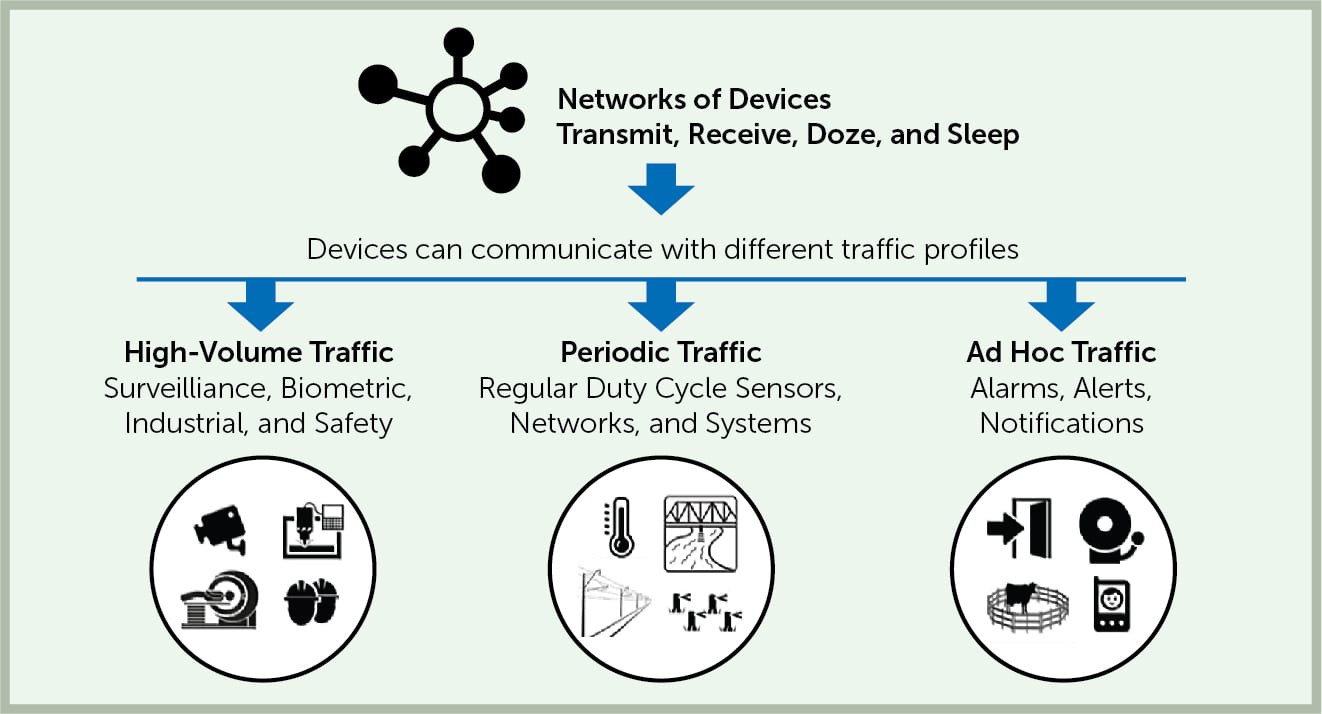Kevin Walsh
Executive Vice President, Strategic Marketing
Palma Ceia SemiDesign
Now is a great time to look at how Wi-Fi HaLow compares to earlier wireless technologies, and assess how it improves the resilience and robustness of IoT networks.
Wi-Fi HaLow is the Wi-Fi Alliance’s designation for the IEEE 802.11ah standard. This standard, ratified in 2016 and published in 2017, defines a radio and protocol standard targeted specifically for IoT devices. In particular, the vast and varied use cases emerging for Industry 4.0 can benefit from these capabilities, more than from any other wireless standard available today.
“Wi-Fi HaLow enables the low-power connectivity necessary for a variety of IoT applications, and solutions are beginning to enter the market,” said Kevin Robinson, SVP of Marketing at Wi-Fi Alliance. “As part of the Wi-Fi portfolio, Wi-Fi HaLow delivers many of the benefits users have come to expect from Wi-Fi today, including multi-vendor interoperability, easy setup, and the latest Wi-Fi security.”
We may have yet to see a great number of Wi-Fi HaLow devices hit the market, but in many ways the stage is set for accelerating adoption of Wi-Fi HaLow. So let’s answer the question …
Why Wi-Fi HaLow?
Two essential attributes make Wi-Fi HaLow better for IoT industrial applications than other standards:
- Longer range: It is a Sub-gigahertz radio standard, adding longer range with scalability and efficiency.
- Tailored for IoT: Wi-Fi HaLow is specifically designed as an IoT-handling protocol. It was designed specifically to manage and optimize wireless communication between devices.
1. Reliable Connections at Long Range
Wi-Fi HaLow has better propagation characteristics than traditional Wi-Fi, thanks to its operating at a sub-gigahertz radio standard (below 1 GHz). Put simply, a sub-gigahertz radio transmits better through obstacles and over distance – you experience less signal loss. Wi-Fi HaLow devices transmit farther than Wi-Fi standards that operate at 2.4G and 5G, and at the new 6G frequencies.
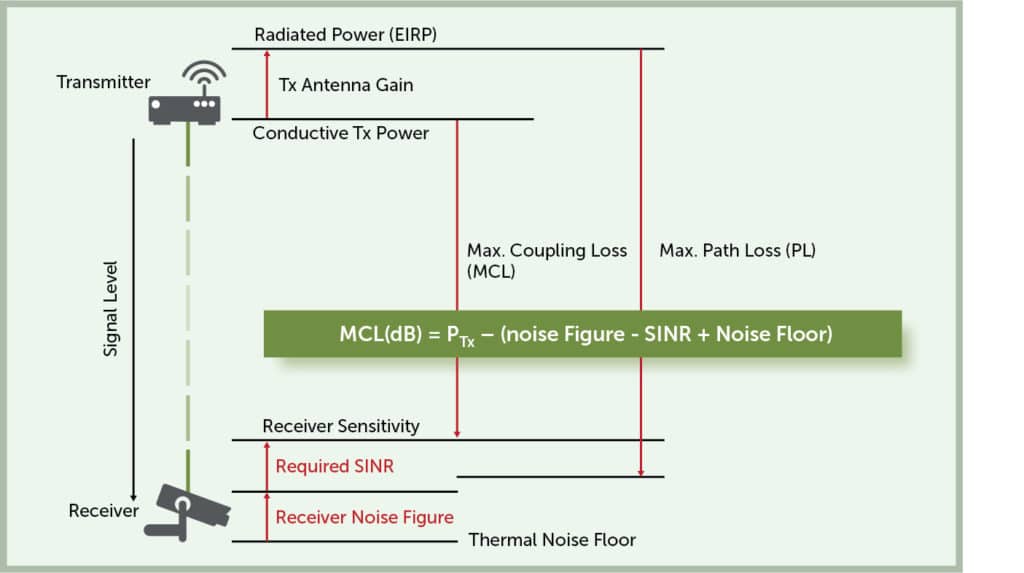
In industrial environments, transmitting at long range while still maintaining a robust connection is difficult. It’s particularly troublesome for indoor industrial areas, which are typically crowded with equipment that generates Electro Magnetic Interference (EMI), which raises havoc with wireless connections, especially Bluetooth and Zigbee connections.
The ability to transmit at longer range and maintain a robust connection is determined by a complex set of factors which determine whether a radio signal will travel from the transmitter to receiver and have enough of a signal left to be detected and decoded reliably (see Figure 1). Maximum Coupling Loss (MCL) or Maximum Path Loss (MPL) quantities (in dBm) provide a metric to determine how far a signal will travel to maintain proper connectivity. As a signal travels through air or through obstructions, the signal fades and attenuates (loses power in dBm).
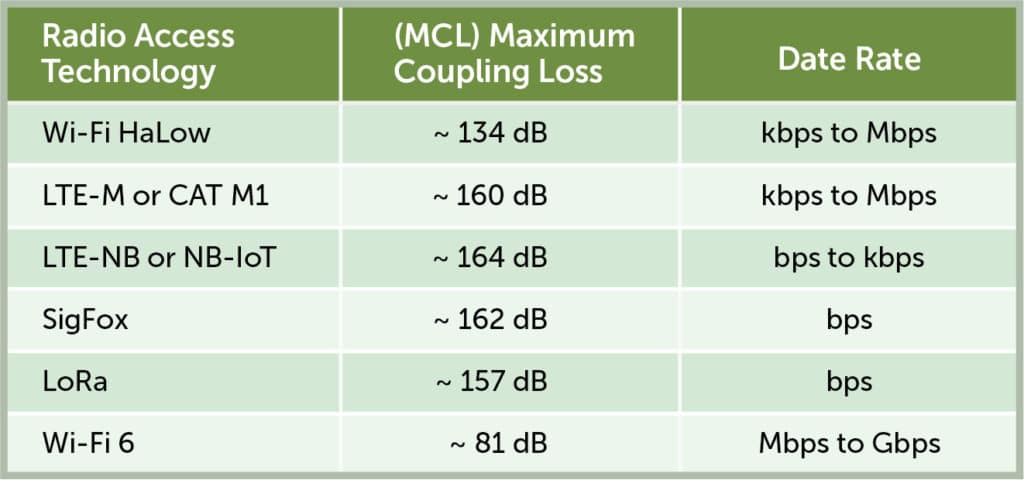
Table 1 shows the MCL for various radio technologies. Wi-Fi HaLow offers a unique combination of distance and data rate making it the best choice for Wi-Fi-based IoT applications.
Not only does Wi-Fi HaLow use a Sub-gigahertz frequency, but it has a set of robust modulation and coding schemes that also improve the range and robustness of the channel connection.
Table 1 also shows that Wi-Fi HaLow’s MCL is just short of the best LPWAN standards while providing significantly more throughput. This balance between range and throughput fills an important Use Case gap for IoT applications involving video and telemetry data.
2. Tailored for IoT
IoT networks often need to support thousands of devices, and managing those large networks carries with it multiple problems. Opening a communications channel to each device creates issues – who can talk and when. Managing this channel contention is the only way to ensure that communication to each device is successful.
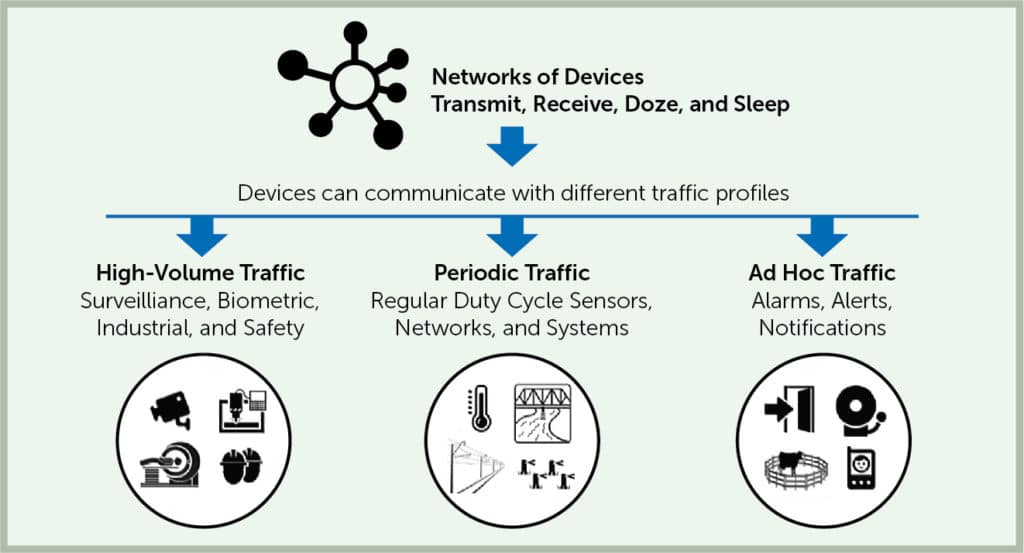
Wi-Fi HaLow was developed with IoT in mind, and includes specific features to manage the different types of traffic seen in typical IoT networks (see Figure 2). IoT networks have a diverse set of traffic profiles, often all existing in the same network. These varied traffic patterns require mechanisms to make sure device communication is handled in an orderly and efficient manner.
Handles Thousands of Devices
Wi-Fi HaLow expands the ability of an Access Point — a gateway or hotspot — to support dense networks by defining an Association IDentifier (AID) hierarchy. This approach uses a page, block, subblock structure as illustrated in Figure 3.
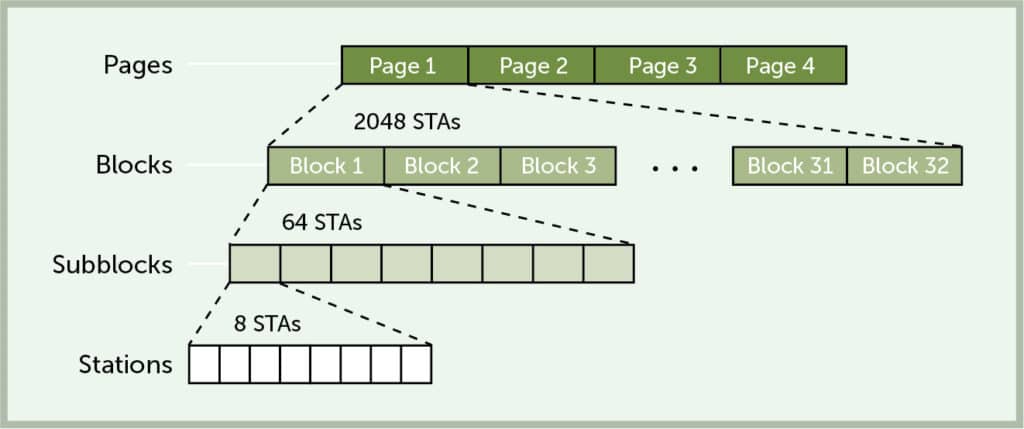
Devices (STA-Stations) are associated to the Access Point (AP) by means of a 13-bit identifier. Not only does this structure allow Wi-Fi HaLow to support 4 times the number of STAs compared to the legacy IEEE 802.11 standards, such as Wi-Fi 5 and 6, but the page structure allows networks to be organized for efficiency (managing devices by Page or Group/Type). Each Group can contain like type devices, or devices located in one area versus another. Grouping allows the AP to manage the network devices more efficiently by communicating with each group in turn. Such a hierarchical structure can support up to 8191 devices (213-1) per AP.
Contention Prevention
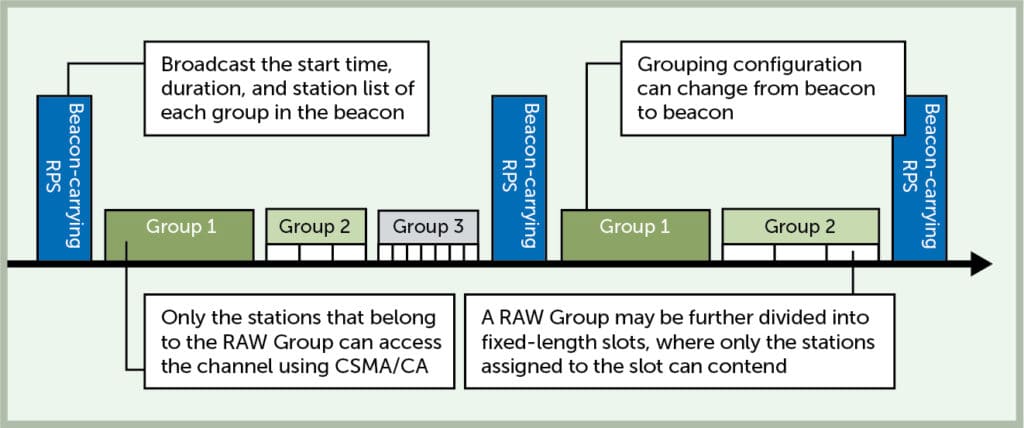
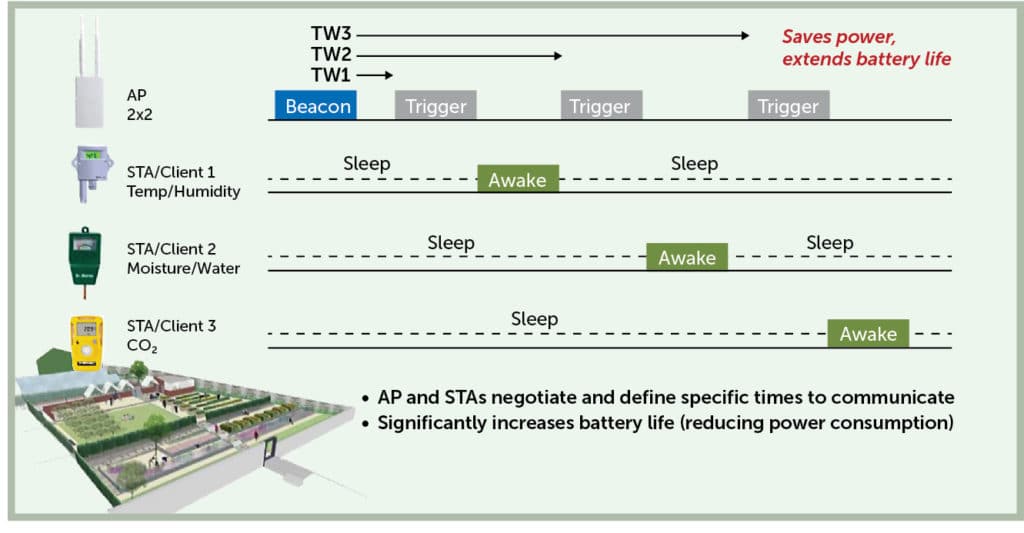
Wi-Fi HaLow introduces a new way to handle communications with devices (STAs) in dense networks to reduce channel contention. Devices are first organized in groups using their AID. A new Resource Allocation Window (RAW) mechanism then manages each device and wakes them up in an orderly manner. This means most other devices can remain asleep and not contend for the channel, creating clear and reliable connections. Groups of devices can be further assigned to slots of varying lengths. Only devices in their respective slots can contend for the channel, further reducing contention (see Figure 4).
Several other protocol features help the Wi-Fi HaLow AP better manage contention. Reducing contention also extends the lifetime of battery-powered devices. Devices remain asleep until they know it is their turn, to talk or listen, first by group and then by slot. Remaining asleep in the lowest power-consuming mode extends battery life.
It should be noted that the RAW feature is newly available via the Wi-Fi protocol and is not available in earlier connectivity standards Wi-Fi 4, 5 or even 6.
Another feature first defined in Wi-Fi HaLow, Target Wake Time (TWT), operates independently of a RAW. The hotspot (an Access Point) and the device (a Station) can negotiate a pre-defined wake time. These devices can remain asleep until their specified time to wake, when a trigger signal is sent indicating the device can wake (see Figure 5). This new feature also reduces power consumption for IoT devices, as devices remain asleep when inactive.
I’ve written previously on Wi-Fi HaLow’s pros and cons, and Wi-Fi HaLow vs. Lora, Wi-Fi 6, Bluetooth and other connectivity technologies. So when you look at range, throughput, density and low-power operation, of all the connectivity standards, Wi-Fi HaLow looks like the best bet for IoT.
Kevin Walsh joined Palma Ceia SemiDesign in 2016 and has more than 25 years of experience in semiconductor, IP and EDA. He has an extensive background in marketing, including strategic and tactical planning, mergers and acquisitions, establishing distribution channels and joint marketing partnerships. Most recently he worked for Faraday Technology as Vice President of Strategic Marketing. He was Executive Vice President and a founder at Sapphire Design Automation, as well as Vice President of Marketing at Simplex Solutions. Other previous roles include serving as Vice President of Marketing and Director of Marketing at Gennum, Semtech, inSilicon, Arasan Chip Systems and Synopsys. He holds a Bachelor of Science degree in Electrical Engineering and Computer Science from the University of California, Berkeley, and an MBA from Pepperdine University.
